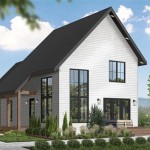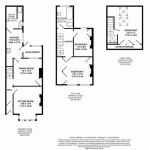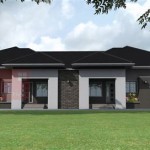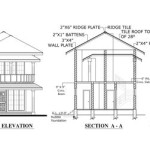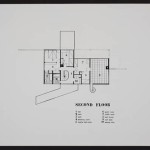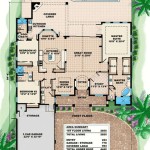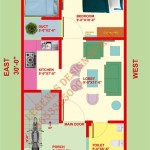House Plan Considerations for East-Facing Plots
Designing a house plan for an east-facing plot requires careful consideration of various factors, including natural light optimization, ventilation, and adherence to principles of spatial harmony. The orientation of the plot significantly influences the building's energy efficiency, ambiance, and overall livability. Therefore, a well-thought-out house plan is crucial to maximizing the advantages offered by an east-facing property.
The primary benefit of an east-facing plot is the abundance of morning sunlight. This can be strategically leveraged to illuminate living spaces and create a warm and inviting atmosphere. However, it is equally important to mitigate the intense afternoon heat from the west, which can lead to discomfort and increased energy consumption. A successful house plan should balance these opposing forces to ensure a comfortable and energy-efficient living environment.
Before embarking on the design process, it is essential to analyze the specific site conditions. This includes evaluating the surrounding landscape, existing vegetation, and potential obstructions to sunlight. Understanding these factors will inform design decisions regarding window placement, room layout, and the use of shading devices.
Optimizing Natural Light and Ventilation
One of the fundamental principles in designing for an east-facing plot is to maximize the utilization of natural light. This can be achieved through strategic placement of windows and skylights, particularly on the east side of the building. Large windows in the living room, dining area, and bedrooms can capture the morning sun, creating bright and cheerful spaces. However, it is important to consider the size and placement of windows to avoid glare and excessive heat gain. High-performance glazing can help to reduce heat transfer while allowing ample light to enter.
Furthermore, the orientation of rooms should be carefully considered. Common areas such as the living room and dining room are ideally located on the east side of the house to benefit from the morning sun. Bedrooms can also be placed on the east side, allowing residents to wake up to natural light. Service areas, such as the kitchen and bathrooms, can be located on the west side of the house, as they are less dependent on natural light and can act as a buffer against the afternoon heat.
Effective ventilation is another critical aspect of house plan design. Cross-ventilation, which involves strategically placing windows and doors to allow air to flow through the building, can help to regulate temperature and improve indoor air quality. East-facing properties often benefit from prevailing winds that blow from the east, allowing for natural ventilation during the morning hours. West-facing windows can be smaller or shaded to minimize heat gain during the afternoon.
The use of natural materials, such as wood and stone, can also contribute to a comfortable and energy-efficient living environment. These materials have good thermal properties and can help to regulate temperature and humidity. Furthermore, they can create a warm and inviting ambiance.
Mitigating Heat Gain and Ensuring Privacy
While maximizing natural light is important, it is equally crucial to mitigate heat gain, particularly from the west. This can be achieved through various design strategies, including the use of shading devices, such as overhangs, awnings, and trees. Overhangs can effectively block the high angle of the summer sun while allowing the lower angle of the winter sun to penetrate the windows. Awnings can provide additional shading and can be adjusted to control the amount of sunlight entering the building. Trees can also provide natural shading, but it is important to choose species that do not obstruct ventilation or compromise the structural integrity of the building.
The orientation of the building on the plot can also influence heat gain. By orienting the longer axis of the building along the east-west direction, the amount of surface area exposed to the afternoon sun can be minimized. This can help to reduce heat gain and improve energy efficiency.
Privacy is another important consideration in house plan design. The placement of windows and doors should be carefully considered to ensure that residents have adequate privacy from neighboring properties and public spaces. Landscaping can also be used to create a natural barrier and enhance privacy. Fences and walls can provide additional privacy but should be designed in a way that does not obstruct ventilation or compromise the aesthetic appeal of the building.
The use of curtains, blinds, and other window treatments can also help to control light and privacy. These can be adjusted to allow light to enter during the morning hours while providing privacy during the afternoon and evening.
Considerations for Spatial Harmony and Aesthetics
Beyond functional considerations, a successful house plan should also prioritize spatial harmony and aesthetics. The layout of the rooms should be logical and intuitive, creating a sense of flow and connectivity. The use of open floor plans can enhance the sense of spaciousness and allow natural light to penetrate deeper into the building. However, it is important to consider the acoustic implications of open floor plans and to provide adequate sound insulation between different areas of the house.
The design of the facade should be aesthetically pleasing and in harmony with the surrounding environment. The use of appropriate materials, colors, and proportions can create a visually appealing building that complements the landscape. The incorporation of architectural details, such as balconies, verandas, and courtyards, can enhance the character and charm of the house.
The integration of indoor and outdoor spaces is another important aspect of house plan design. This can be achieved through the use of patios, decks, and gardens. These outdoor spaces can provide an extension of the living area and allow residents to enjoy the natural environment. The location and orientation of these outdoor spaces should be carefully considered to maximize their usability and comfort.
The principles of spatial balance and proportion should be applied to all aspects of the design, from the layout of the rooms to the selection of furniture and finishes. A well-proportioned house will feel comfortable and inviting, creating a sense of well-being for its occupants.
The design of the roof is also a crucial element. A well-designed roof can provide protection from the elements, enhance the aesthetic appeal of the building, and contribute to energy efficiency. The slope of the roof should be appropriate for the local climate, allowing for efficient drainage of rainwater and snow. The choice of roofing materials should be durable and aesthetically pleasing, complementing the overall design of the house.
Ultimately, the goal of house plan design for an east-facing plot is to create a comfortable, energy-efficient, and aesthetically pleasing living environment that maximizes the benefits of the plot's orientation while mitigating potential drawbacks. This requires a careful balancing of functional considerations, such as natural light optimization and heat gain mitigation, with aesthetic considerations, such as spatial harmony and visual appeal.

East Facing Vastu House Plan 30 X45

30 X40 East Facing House Plan Is Given As Per Vastu Shastra In This Autocad Drawing File Now

Best 4 East Facing House Vastu Plan Namma Family Builder

25x25 East Facing 2bhk Ground Floor House Plan 625 Sqft Plot

30x40 House Plan For East Facing 4 Bhk 024

30x40 East Facing 3 Bhk House Plan 1200 Sq Ft Village Design

12 Unique East Facing House Plans For 60x40 Site Image

30x40 House Plan For East Facing 4 Bhk 024

30x50 North East Facing Plot Design By Make My House

25x50 House Plan East Facing As Per Vastu Best Duplex

